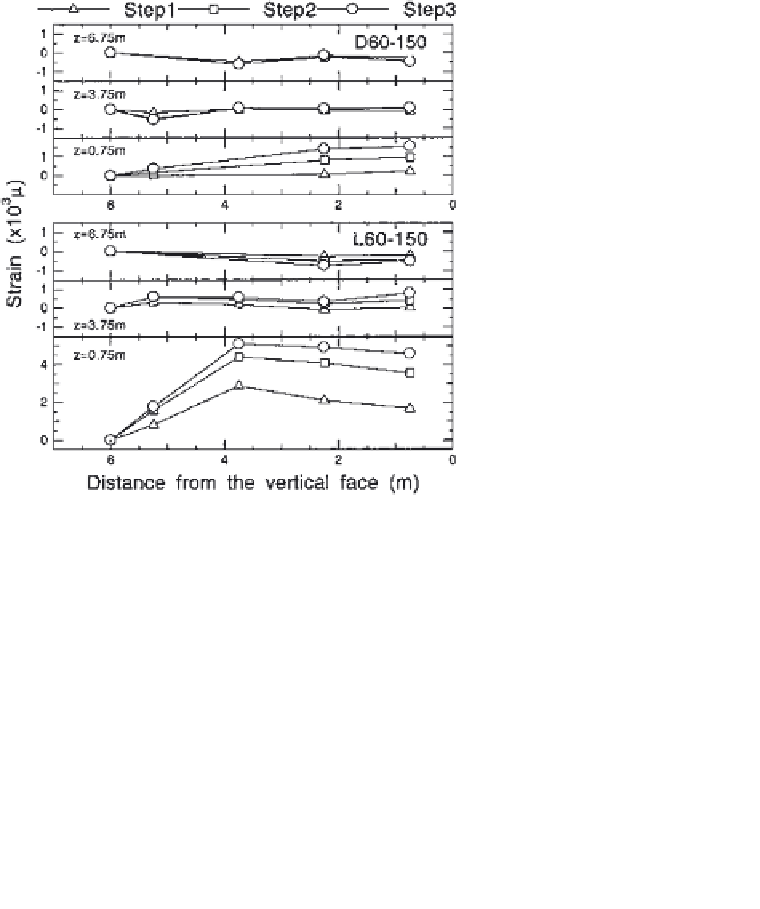Geoscience Reference
In-Depth Information
Figure 12
Residual strains of geogrids: D45-150, L60-150.
(Modified from
Takahashi et al., 2001.)
the geogrids in the first step for L60-150, while in D60-150 the residual strain
in the first step was very small and gradually increased backward from the face
with the following shaking number. This tendency is probably associated with the
progress of the permanent deformation of the reinforced soil wall and indicates
that the slight lack of the compaction of the soil, Dr
d
¼
0.08Mg/m
3
in this case,
may result in the large permanent deformation of the wall.
From Fig. 12 it seems that the contribution of the lower geogrids is greater
than the upper ones to the seismic performance of the reinforced earth. However,
the very important role of the upper geogrids can be confirmed form
Fig. 13
,
which shows the time history of tensile strains observed in the step 3 shaking of
D60-150. Although overburden stresses on the geogrid surfaces were smaller in
the middle and top geogrid than the bottom one, strain amplitudes of the former
two portions were larger than the latter portion. The large amplitudes imply that
the geogrid resisted well against the cyclic shear forces during shaking. Koseki
et al. (1998) and Satoh et al. (1998) point out the importance of the reinforcement
at the upper portion of the wall.









Search WWH ::

Custom Search